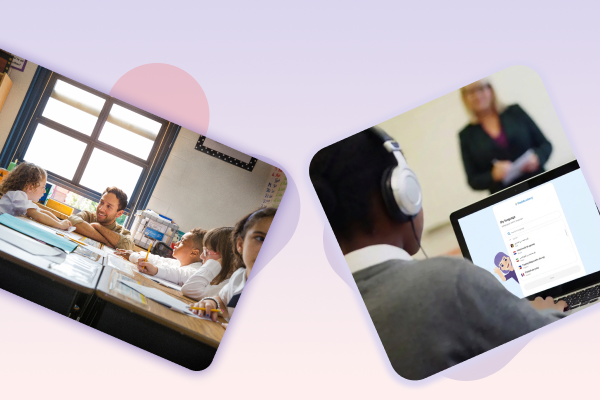

The Department for Education’s report Improving the way Ofsted inspects education marks the start of a significant shift in how schools in England will be inspected from November 2025. One major development is the new Ofsted inclusion framework, which places inclusion at the heart of inspections. Here we’ve unpacked what’s changing and what it could mean for schools supporting EAL students.
Ofsted: inclusion is central
A crucial update is that inclusion now features as a standalone evaluation area in Ofsted reports. Inspectors will look at whether schools are identifying and providing high-quality support for all learners, especially those who are disadvantaged, have SEND or are known to social care.
This change within Ofsted inclusion guidance is potentially good news for EAL learners, whose needs will be more visible in the inspection process. Inclusion is also woven through other areas such as curriculum and leadership, encouraging a whole-school approach.
However, the effectiveness of Ofsted’s inclusion requirements will depend on inspectors’ own knowledge and experience of multilingualism and how well they apply them to multilingual contexts.
Focus on EAL in the new school toolkit
The state-funded schools inspection toolkit includes a clear section on EAL at page 20. This outlines what inspectors will look for when evaluating teaching and curriculum provision.
Under the new Ofsted inclusion guidance, inspectors are asked to consider whether:
- Teachers recognise that pupils learning English already speak at least one other language – and that expectations remain high
- English language proficiency is assessed accurately and regularly
- Lessons include scaffolding, modelling, extending and developing their ideas to develop understanding
- Vocabulary, especially subject-specific language, is taught explicitly and clearly
- Pupils have frequent opportunities to read and apply new language
- The Ofsted inclusion changes mean that inspectors will expect to see structured and consistent approaches to language development across the curriculum.
Areas of uncertainty
While stronger recognition of EAL in the new Ofsted inclusion guidance is welcome, several areas are unclear:
- Reporting on language proficiency levels – The reforms don’t yet make it explicit that inspectors should distinguish between new arrivals, developing learners and fluent students. If this data isn’t shown in reports, wide differences in attainment could be hidden.
- Inspector expertise and consistency – Training and consistency are emphasised, but it’s not guaranteed that all inspectors will have deep knowledge of language acquisition or multilingual education. Past inspections have occasionally misinterpreted EAL needs as SEND, for example.
- Accessibility for multilingual families – The report doesn’t mention translating report cards or inspection summaries, which could limit access for multilingual parents and carers.
Context matters
The new framework puts greater emphasis on understanding a school’s context before inspection. This should help ensure that schools with large numbers of multilingual learners are assessed fairly.
Inspectors will hold a pre-inspection conversation with leaders, giving schools a chance to explain their demographics, priorities and challenges. This is an opportunity to highlight your EAL context and demonstrate the strategies and progress you’ve made.

What this means for your school
These reforms, particularly the Ofsted inclusion guidance, expect schools to take a structured, evidence-based approach to language development. For EAL coordinators and classroom teachers, that means:
- Having clear systems to assess and track English proficiency
- Embedding subject-specific vocabulary teaching
- Ensuring opportunities for talk and interaction are planned and meaningful
- Recognising and valuing pupils’ multilingual identities
- Being ready to explain how your curriculum supports EAL progression
We discuss these approaches to EAL strategy in our blog post, EAL tips and tricks where you can find ideas about how to structure your interventions.
Ofsted inclusion guidance: Key takeaways for your EAL provision
The new Ofsted inclusion guidance and the overall inspection model have the potential to make EAL provision more visible and valued. However, its success will depend on how robustly inspectors apply the framework and whether EAL expertise is consistently built into training and evaluation.
For now, the best preparation is to make sure your EAL strategy is robust, evidence-based and clear.
Schools across the UK are already using FlashAcademy® to prepare for Ofsted inclusion requirements and the new framework, raising outcomes for EAL learners.
Not yet a FlashAcademy® customer?
If you’re yet to implement FlashAcademy® for your learners, book a discovery meeting with our team of education managers to find out how we can help you transform your EAL strategy.

